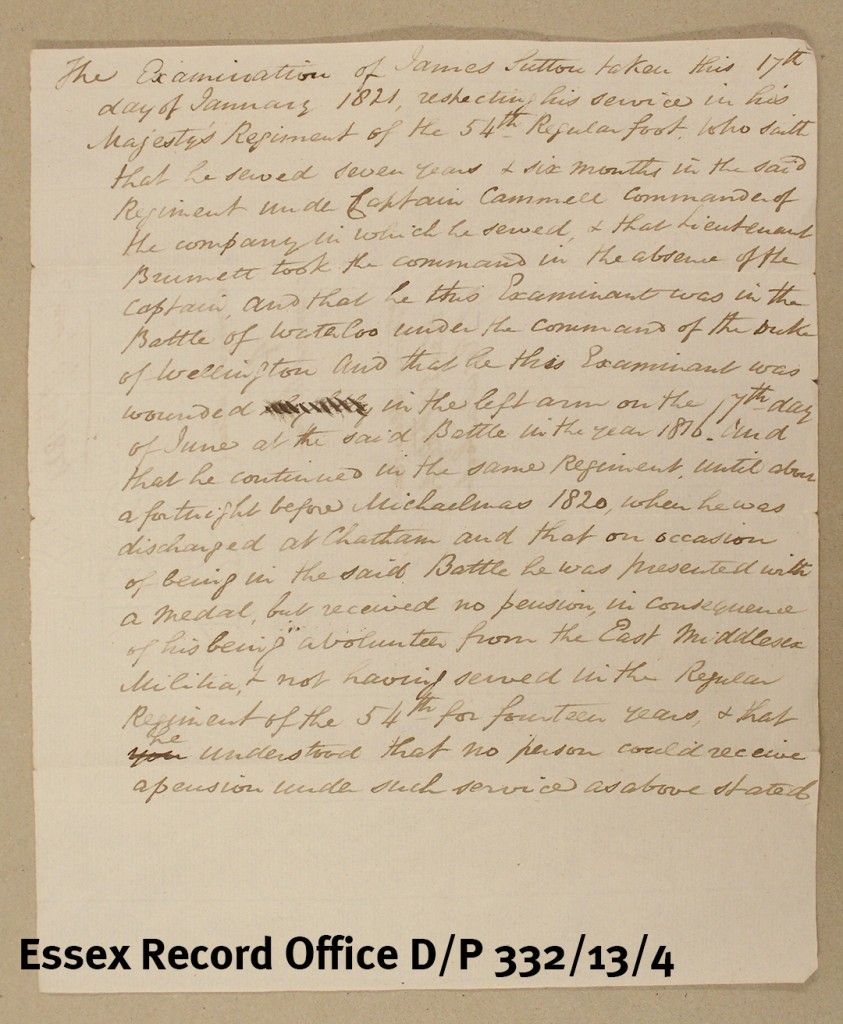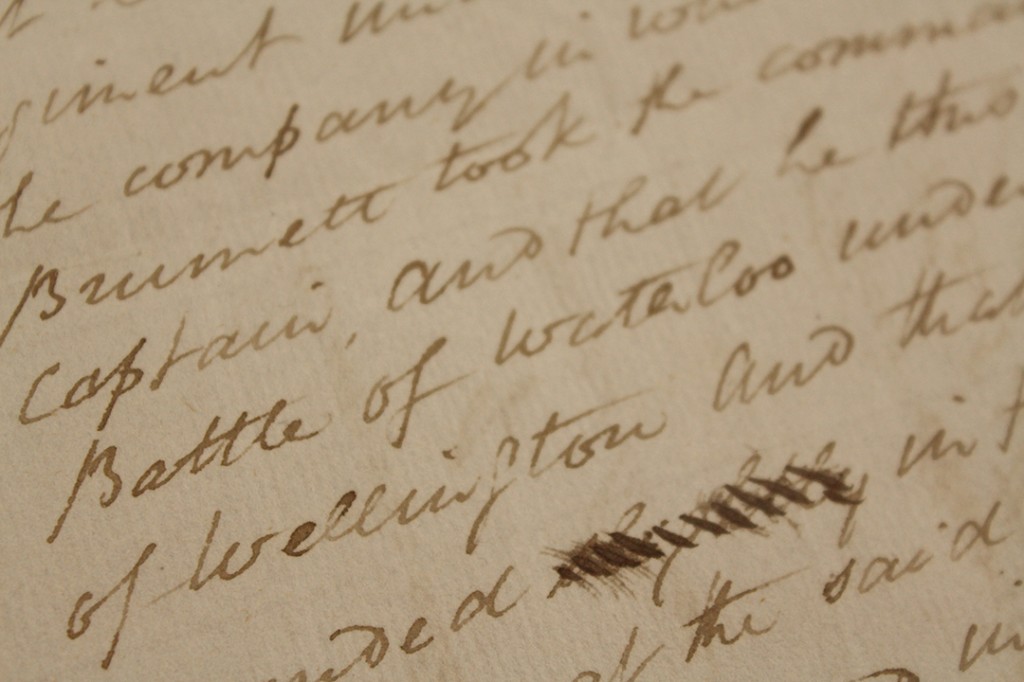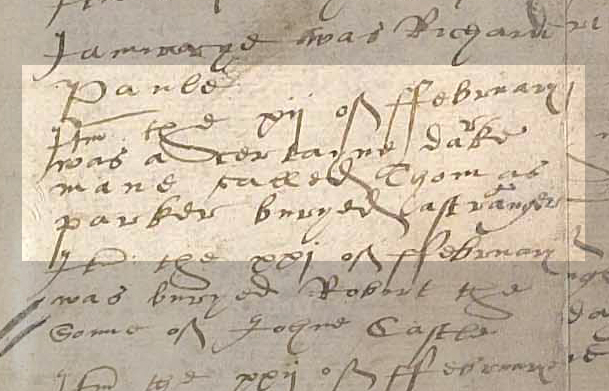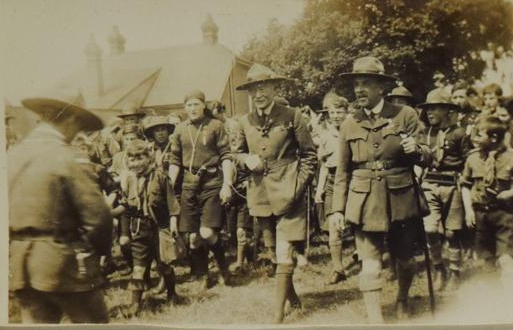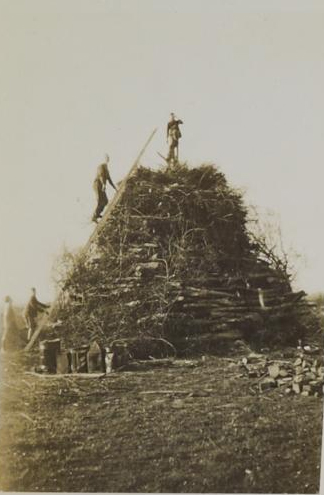Our document of the month for June is a record of a man named James Sutton being questioned by Justices of the Peace trying to establish where he was entitled to claim poor relief (D/P 332/13/4).
James Sutton was attempting to claim poor relief in Rayleigh, but had not been born there. Under the laws of settlement, if it could be proved that a person claiming relief was legally the responsibility of another parish then they could be removed to that place. Settlement examinations often contain a great deal of biographical information about the poor, and there are thousands of them in our collections.
What is notable about this particular examination is that James Sutton gave no information about his place of settlement but stated that he had served for seven years and six months in the 54th Foot and had been wounded in the left arm at the Battle of Waterloo. He continued to serve until 1820 when he was discharged.
He stated that had been awarded a medal for his service but not a pension as he had volunteered from the East Middlesex Militia and had served less than 14 years with the 54th Regiment, and that this meant that he was not entitled to a pension. The Waterloo Medal was the first time a medal was awarded to all ranks (although we cannot find a James Sutton of the 54th Foot on the Waterloo Medal Roll).
2015 marks the 200th anniversary of the Battle of Waterloo on 18 June 1815, which saw the decisive defeat of the Emperor Napoleon Bonaparte and the French. Within a few days Napoleon had abdicated and by the end of the year was in exile on St. Helena.
Waterloo brought to an end wars which had raged across Europe from the 1790s. Approximately 15,000 British soldiers were killed or wounded in the battle, with another 7,000 Prussian and between 20 and 24,000 French casualties. Nearly 50 years of peace followed in Europe, which was brought to an end by the Crimean War in 1853 when Britain and France fought as allies.
This document will be on display in the ERO Searchroom throughout June 2015.

